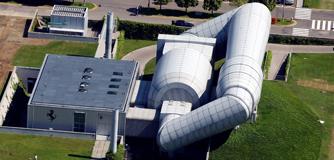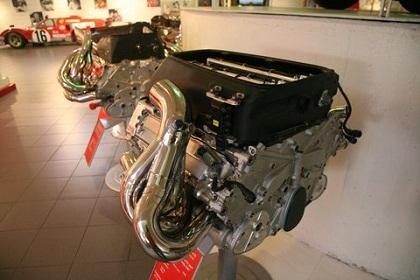Video: Engineering Ferrari
May 23, 2012

Nothing but pasta could possibly be more representative of Italian sumptuousness than Ferrari, the sexy luxury race car brand that made its debut in 1947 with the 125S produced in Maranello, Italy.
Maranello, near the city of Modena, has been Ferrari's home from the firm's inception, and the main museum dedicated to the firm's famous fast cars, as well as its assembly line and various factories, are all situated there.
The Ferrari museum, opened just more than a year after Enzo Ferrari's death in 1990, draws more than 200,000 visitors a year from all corners of the globe, who come to ogle and drool over their favorite models -- from the Ferrari 125S and 166 Inter all the way up to the Ferrari FF -- at close range. The expo shows off cars past and present across its 2,500m space, including rare vintage models and a well-stocked trophy hall.

Truly impressive to the engineering-minded, however, is the company's large factory, situated right next to the museum and designed with employees and technology in mind. The plant, or the "Ferrari citadel," as it's referred to, has expanded and evolved over its six decades of existence, with famous architects like Renzo Piano, Jean Nouvel, Marco Visconti, Massimiliano Fuksas, and Luigi Sturchio all leaving their indelible mark on the complex.
Ferrari has done its utmost to ensure that its factory employees -- who are treated to a wide range of services from free family medical exams to schoolbooks for their children, gyms, and subsidized loans -- work in the most comfortable environment possible. Bright, climate controlled, noise reduction, and green spaces abound, and indeed, the factory recently won the "Best Place to Work in Europe" award.
In June 2009, Ferrari even opened its own trigeneration center (a system which combines heat, cooling, and power production) at its plant, one of the largest in Italy and the first to be adopted by a company manufacturing sports cars.
Together with the photovoltaic power plant installed on the roof of Ferrari's mechanical workshop in 2008, the trigeneration system -- representing a 10 million euro investment -- makes the factory almost fully autonomous in terms of power generation. What little energy the factory does need from external sources, the company sources from renewable energy supplies, which has led to an apparent 40 percent reduction in C02 emissions (40,000 metric tons) in 2010 alone.
About the Author(s)
You May Also Like



